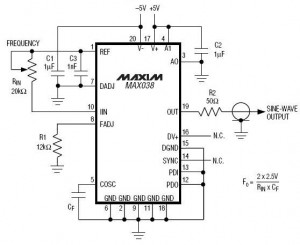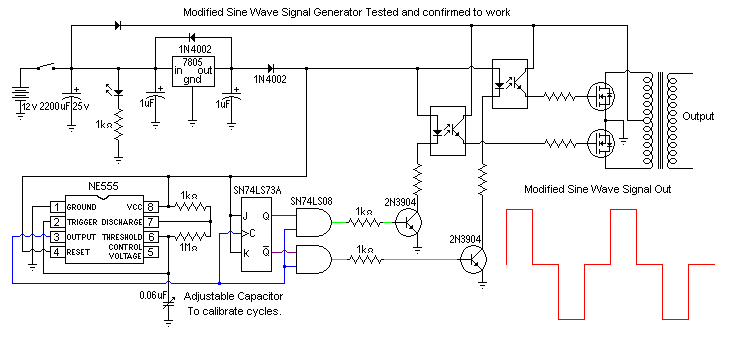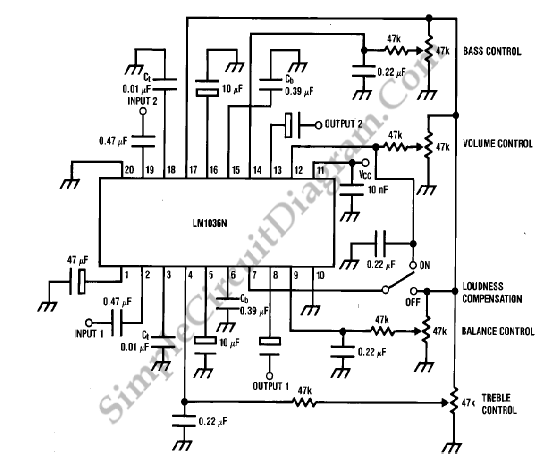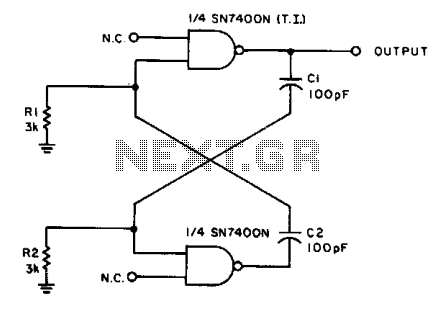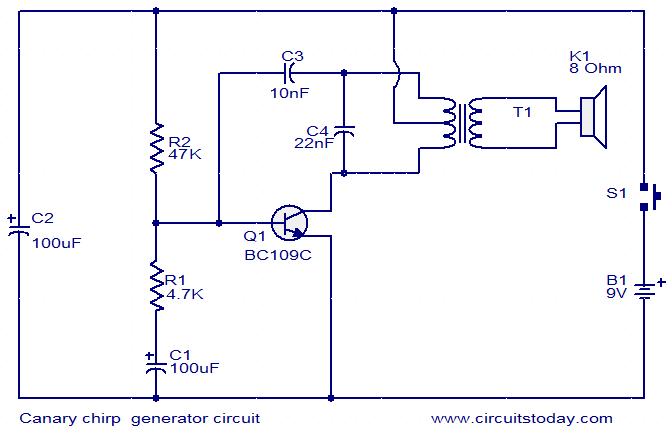
Tone generator
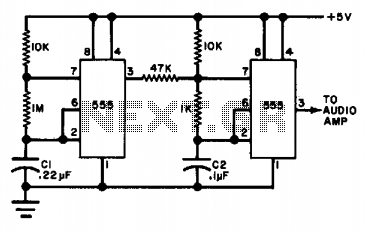
The circuit utilizes either two 555 timers or a single dual timer. Capacitor C1 regulates the speed of the warble effect, while capacitor C2 defines the pitch. The specified values are expected to generate a notably distinctive signal.
The described circuit employs the 555 timer IC, a versatile component commonly used in various timing applications. In this configuration, the circuit can be set up in astable mode, where the timers continuously switch between high and low states, creating a square wave output. This output can be manipulated to produce a warbling effect, which is characterized by a periodic rise and fall in frequency.
Capacitor C1 plays a crucial role in determining the frequency of oscillation. By selecting an appropriate value for C1, the speed of the warble can be adjusted, allowing for a range of effects from slow, drawn-out oscillations to rapid, fluttering signals. The time period of the oscillation is influenced by both C1 and the resistors connected to the timing pins of the 555 timer.
Capacitor C2, on the other hand, is responsible for setting the pitch of the output signal. The pitch can be altered by changing the capacitance of C2, which affects the duty cycle and the overall frequency of the output waveform. The interaction between C1 and C2 allows for a rich variety of sound modulation, making this circuit suitable for applications such as sound synthesis or alarm systems.
The values of the components used in the circuit are critical to achieving the desired distinctive signal. Careful selection of resistors and capacitors will yield a wide range of audible tones and effects. Properly tuning these components can result in a unique sound that stands out in various applications, from musical instruments to electronic sound effects.
In summary, this circuit design utilizing 555 timers offers flexibility and creativity in sound generation, with capacitors C1 and C2 serving as key elements in controlling the warble speed and pitch, respectively.The circuit uses a pair of 555 timers or a single dual timer. Capacitor Cl controls the speed of the warble, while C2 determines the pitch. The values shown should produce quite a distinctive signal.
The described circuit employs the 555 timer IC, a versatile component commonly used in various timing applications. In this configuration, the circuit can be set up in astable mode, where the timers continuously switch between high and low states, creating a square wave output. This output can be manipulated to produce a warbling effect, which is characterized by a periodic rise and fall in frequency.
Capacitor C1 plays a crucial role in determining the frequency of oscillation. By selecting an appropriate value for C1, the speed of the warble can be adjusted, allowing for a range of effects from slow, drawn-out oscillations to rapid, fluttering signals. The time period of the oscillation is influenced by both C1 and the resistors connected to the timing pins of the 555 timer.
Capacitor C2, on the other hand, is responsible for setting the pitch of the output signal. The pitch can be altered by changing the capacitance of C2, which affects the duty cycle and the overall frequency of the output waveform. The interaction between C1 and C2 allows for a rich variety of sound modulation, making this circuit suitable for applications such as sound synthesis or alarm systems.
The values of the components used in the circuit are critical to achieving the desired distinctive signal. Careful selection of resistors and capacitors will yield a wide range of audible tones and effects. Properly tuning these components can result in a unique sound that stands out in various applications, from musical instruments to electronic sound effects.
In summary, this circuit design utilizing 555 timers offers flexibility and creativity in sound generation, with capacitors C1 and C2 serving as key elements in controlling the warble speed and pitch, respectively.The circuit uses a pair of 555 timers or a single dual timer. Capacitor Cl controls the speed of the warble, while C2 determines the pitch. The values shown should produce quite a distinctive signal.
